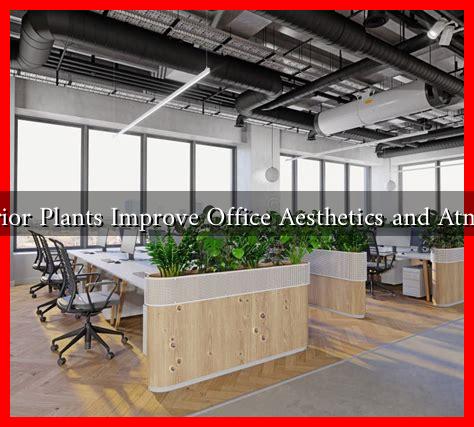-
Table of Contents
Can Interior Plants Improve Office Aesthetics and Atmosphere?
In recent years, the trend of incorporating interior plants into office spaces has gained significant traction. Beyond their aesthetic appeal, these green additions are believed to enhance the overall atmosphere of the workplace. But can interior plants truly make a difference? This article explores the various ways in which plants can improve office aesthetics and atmosphere, supported by research, case studies, and statistics.
The Aesthetic Appeal of Interior Plants
One of the most immediate benefits of adding plants to an office environment is the enhancement of its visual appeal. A well-decorated office can create a welcoming atmosphere for both employees and clients. Here are some ways plants contribute to aesthetics:
- Color and Texture: Plants introduce vibrant colors and varied textures, breaking the monotony of traditional office decor.
- Natural Elements: Incorporating greenery can soften the harsh lines of modern architecture, creating a more inviting space.
- Personalization: Plants allow for customization, enabling businesses to reflect their brand identity through their choice of flora.
For instance, a tech startup might opt for sleek, modern planters with succulents, while a creative agency might choose lush ferns and flowering plants to inspire creativity. The choice of plants can significantly influence the overall vibe of the office.
Enhancing Workplace Atmosphere
Beyond aesthetics, the presence of plants in the workplace can significantly impact the atmosphere. Research has shown that greenery can improve employee well-being and productivity. Here are some key benefits:
- Improved Air Quality: Plants can filter toxins from the air, leading to a healthier work environment. According to a study by NASA, certain plants can remove up to 87% of indoor air pollutants in 24 hours.
- Reduced Stress Levels: A study published in the Journal of Physiological Anthropology found that interacting with indoor plants can reduce stress and promote feelings of calmness.
- Increased Productivity: Research from the University of Exeter found that employees working in environments with plants were 15% more productive than those in bare offices.
These benefits contribute to a more positive atmosphere, fostering creativity and collaboration among employees. For example, companies like Google and Amazon have embraced biophilic design, integrating plants into their workspaces to enhance employee satisfaction and performance.
Case Studies: Successful Implementation of Interior Plants
Several organizations have successfully integrated plants into their office environments, reaping the benefits of improved aesthetics and atmosphere. Here are a couple of notable examples:
- Airbnb: The company’s San Francisco office features a variety of plants, creating a vibrant and inviting atmosphere. Employees report feeling more relaxed and inspired, contributing to a culture of creativity.
- Wells Fargo: The bank’s corporate offices have incorporated living walls and indoor gardens, which not only enhance aesthetics but also improve air quality and employee well-being.
These case studies illustrate that the strategic use of plants can lead to tangible benefits for both employees and the organization as a whole.
Choosing the Right Plants for Your Office
When selecting plants for an office environment, it’s essential to consider factors such as light availability, maintenance requirements, and the overall office aesthetic. Here are some popular choices:
- Snake Plant: Low maintenance and tolerant of low light, making it ideal for various office settings.
- Pothos: Known for its air-purifying qualities and trailing vines, it adds a touch of greenery without requiring much care.
- Peace Lily: Beautiful flowers and excellent air-purifying abilities, perfect for brightening up any space.
By carefully selecting the right plants, businesses can create an environment that is both aesthetically pleasing and conducive to productivity.
Conclusion
In conclusion, incorporating interior plants into office spaces can significantly enhance both aesthetics and atmosphere. From improving air quality and reducing stress to boosting productivity and creativity, the benefits are manifold. As organizations continue to prioritize employee well-being, the integration of greenery into the workplace is not just a trend but a strategic investment in a healthier, more productive work environment. By choosing the right plants and creating a thoughtful design, businesses can transform their offices into vibrant spaces that inspire and engage employees.
For more insights on the benefits of plants in the workplace, you can visit NCBI.

